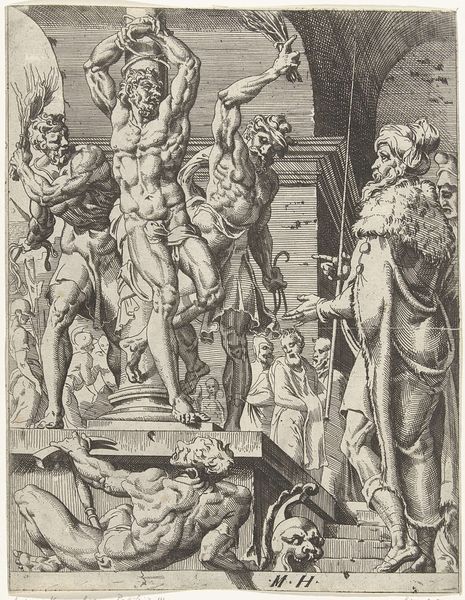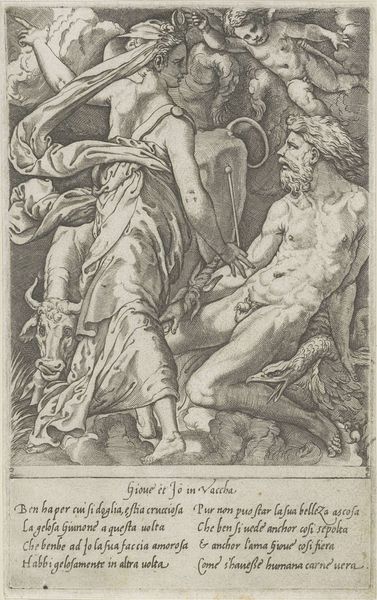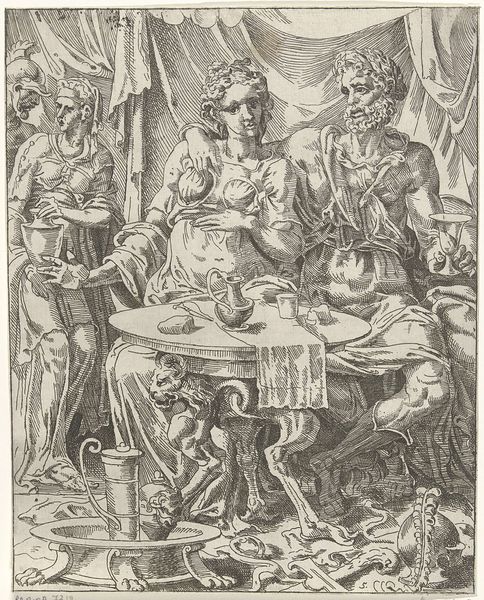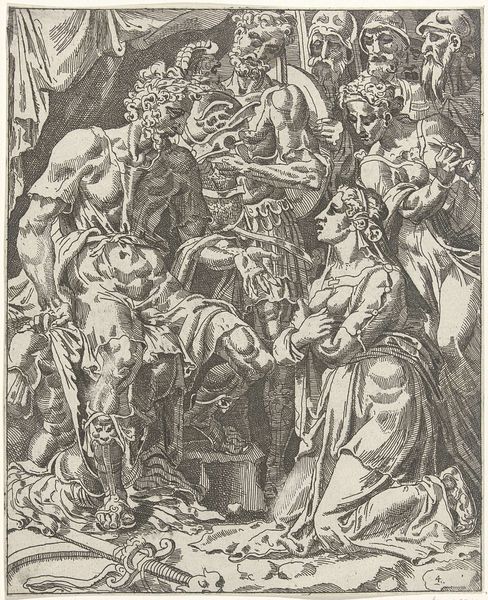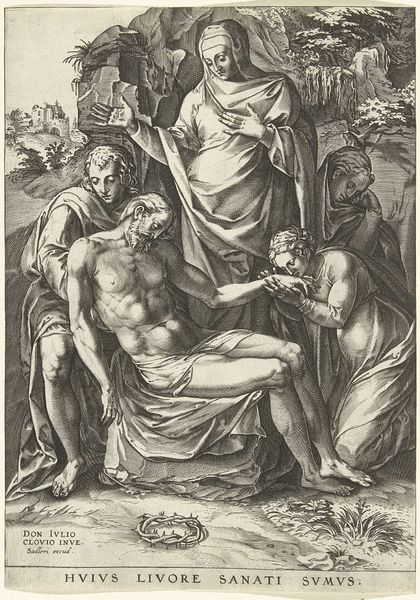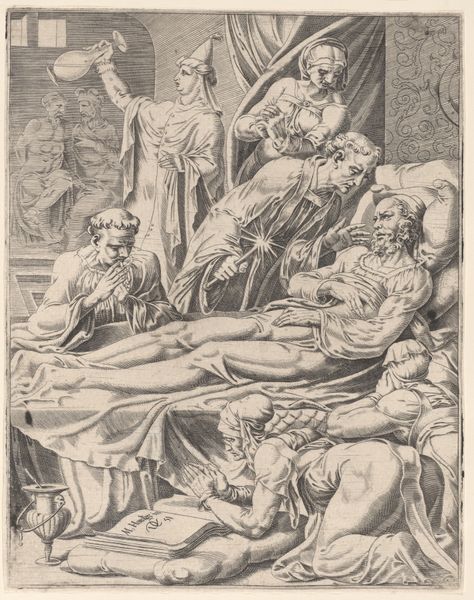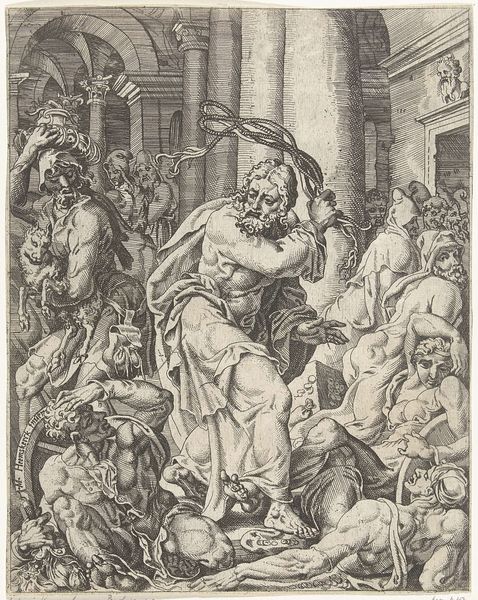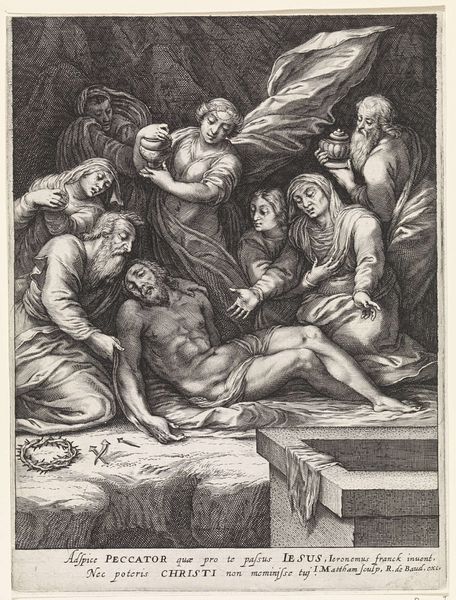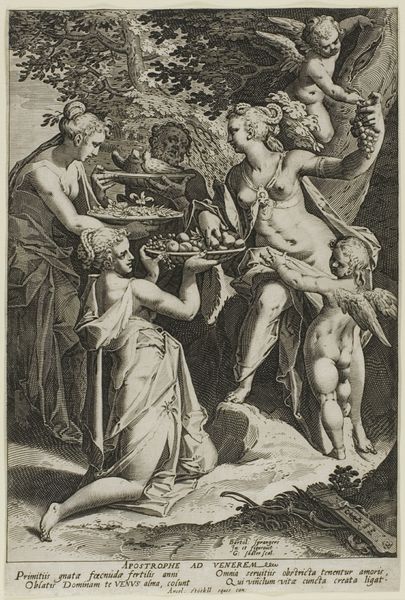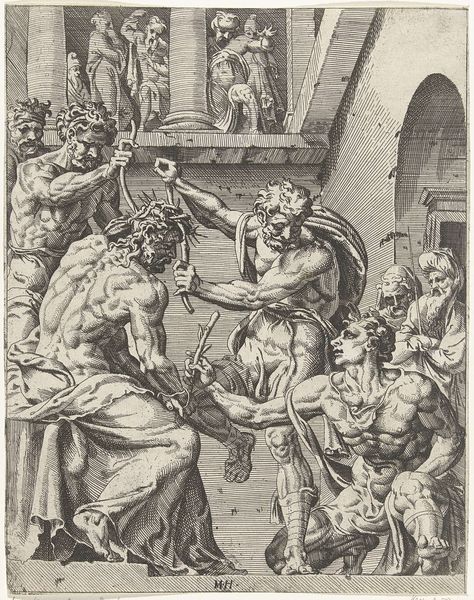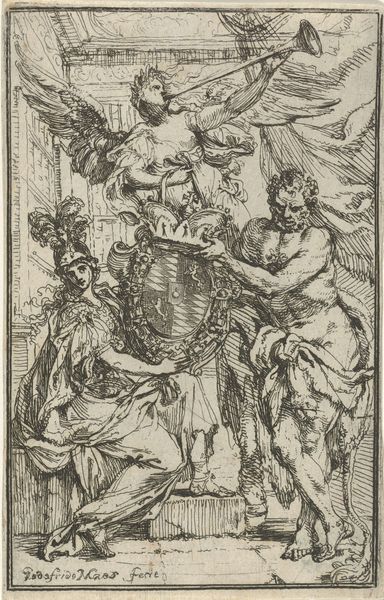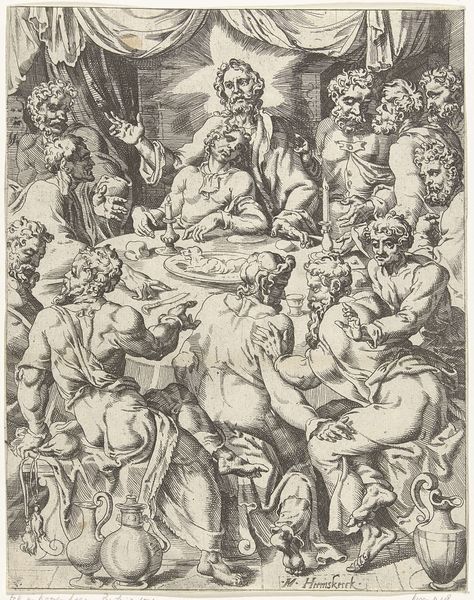
Judit stopt het hoofd van Holofernes in een zak c. 1547 - 1559
0:00
0:00
dirckvolckertszcoornhert
Rijksmuseum
print, engraving
#
narrative-art
#
pen drawing
# print
#
pen illustration
#
pen sketch
#
figuration
#
ink line art
#
history-painting
#
northern-renaissance
#
engraving
Dimensions: width 192 mm, height 235 mm
Copyright: Rijks Museum: Open Domain
Curator: Let’s spend a moment contemplating Dirck Volckertsz Coornhert's engraving, dating from about 1547 to 1559. It's titled "Judit stopt het hoofd van Holofernes in een zak," currently held here at the Rijksmuseum. Editor: My immediate reaction is that it’s incredibly powerful, almost unnervingly so. The stark contrast of light and shadow, the pronounced musculature...there's a strange beauty in the violence. Curator: Absolutely. Coornhert masterfully uses the print medium to explore a scene of brutal liberation. The Book of Judith, of course, tells of Judith, a Jewish widow, who bravely entered the camp of the Assyrian general Holofernes and, after he fell asleep drunk, decapitated him. Her deed saved her city from destruction. Consider the intersections of gender, power, and resistance depicted here. Editor: And the symbolism is so dense. The severed head, usually a trophy of male dominance, becomes in Judith's hands an instrument of female agency and ultimately national salvation. The bag itself, normally used to carry provisions or treasures, contains the instrument of liberation. It's all subverted. I see potent imagery about female empowerment through deception and violence, deeply connected to anxieties of masculine control. Curator: Exactly. There's the complicated interplay of gender roles that you pointed out. But think about the setting as well: Holofernes’ tent, draped in heavy fabric, suggests a space of masculine authority now breached. Judith is not just an individual, but representative of collective resistance. Note the servant standing by, participating in and enabling the act. We see how shared gendered experience fuels an act of monumental consequence. Editor: And the execution! The clean, almost clinical lines amplify the unsettling nature of the scene. Holofernes’ vacant expression frozen at his death makes it hard to turn away, evoking not just horror but something akin to reluctant respect for Judith’s gruesome determination. This also highlights societal views on gender roles during that time period and female determination versus the expectation that women are meant to be demure. Curator: It’s important to remember, of course, that this scene exists within a specific historical context—the Northern Renaissance. Coornhert, known also as a theologian and political theorist, would certainly have seen Judith as a figure of justifiable rebellion against tyranny. Editor: Seeing the biblical figure in the Rijksmuseum creates further connections to both religious memory, but it brings to light questions around feminine presentation in media from various points in history. Ultimately, the print sparks dialogue about what kind of power remains eternal. Curator: Agreed. It serves as a chilling reminder of how art can both reflect and shape perceptions of power, resistance, and identity, even across centuries.
Comments
No comments
Be the first to comment and join the conversation on the ultimate creative platform.
